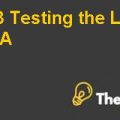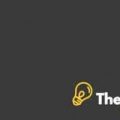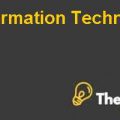Satya Nadella at Microsoft: Instilling a growth mindset Case Study Help
Nadella Rebuilt the Microsoft Culture
After taking over the post of CEO of Microsoft, Nadella made a significant shift in the product focus and set expectations around shifting the culture of the company. He wanted to place intentionally greater emphasis on growth, positivity, individual empowerment and empathy. He focused on transforming the firm into the Learn It All culture, believing that the growth mindset and Learn It All perspectivealways perform better. He intended to develop intelligence among the employees byallowing them to learn,leadingtopersistence in the face of problems and challenges. He wanted to create a culture in which every single employee would desire to push himself and be encouraged to develop their skills and capabilities to the benefit of the wider community and individual. He wanted to focus on long term benefits of workforce and culture that should engage morale, creativity and productivity.
In addition to this, he stressed the significance of being good and an effective listener by being receptive to the opinions and suggestions of others, and being open-minded whenever he had to take decisions. He wanted to own and control the technologies behind the product that thecompany made, and participate in the markets where it can make a significant contribution. He wanted to instill the growth mindset through coaching initiative for the managers. Also, he wanted each and every employee to put in extra efforts and time to understand why they failed, and quickly rebound from setbacks and focus on ability rather than disability. He intended to deliver success through accountability & empowerment by caring, coaching and modeling. He wanted themanagersto live the culture and become a demonstrable example for employees. By doing so, the employees of the company would have a framework for how to recover from setbacks and approach the problem. Managers are required to create a space where employees would learn from their blunders or mistakes, and focus on their potential in learning and growing. Furthermore, he emphasized on the importance of defining objectives to the team and helped the team in learning and adapting the cultural change, which was associated with thecommitment of long-life learning and customer satisfaction.
SpecificActions Nadella Took to Create the Desirable Culture
- The shift from knows-it-all to learn-it-all significantly inspired 125,000 employees, which in turn became a source of inspiration to the investors, developers and customers.
- The use of artificial intelligence in terms of bringing improvement in accessibility.
- Replacement of stack-ranking performance system with a compensation process and continuous feedback and coaching.
- An intentional change in the performance review system of the employees.
- Customer obsession – the requirement to meet the unmet and unarticulated needs of the customers through the use of great technological approach.
- Workforce diversity to have wide-ranging perspectives and opinions.
- Involvement of employees in the decision-making process to bring significant change in their own behaviors and biases.
- Prioritizing the innovation with respect to the core values of the organization for empoweringthe organization and its users to do more.
Relationships between executive leadership, organizational culture, and strategy
The leadership behavior lasts significant impact on the culture of the organization as the core organization’s values begins with the leadership & then evolves to the style of leadership. The employees of an organization would be led by the behavior of the leaders and values. When strong unified values, beliefs and behavior are developed, a strong culture within an organization emerges. Taking the example of Nadella, he is the proponent of the growth mindset philosophy, who hastaken various approaches to drive and initiate efforts for the long term change – beginning with involving and engaging the employees and managers to present their valuable ideas and employee awareness campaigns in order to drive the adoption of a growth mindset. Applying the transformational leadership style has made Microsoft responsive to the needs of the market, improved the employees’ productivity and commitment, and delivered highly financial returns to the investors.
Recommendations to Nadella
In terms of achieving more successful innovation and bringing further improvement in the organizational growth, the business environment at Microsoft should be reviewed to determine the strengths and weaknesses. It would significantly provide an assistance to avail the opportunities of the external business environment. Similarly, redefining of the mission and vision of the Microsoft needs to be considered as a part of strategy formulation. Additionally, the development of strategic plan is important to set up new software-based products against the leading competitors in the market. Also, Nadella needs to focus on review and identification of the talent pool and the factors, which impact their performance within the organization, positively.
Appendix A – SWOT Analysis
| Strengths | Weaknesses |
| · Strong standing in the competitive market
· Develops its own hardware, software, and operating system · Enormously profitable organization · Strong loyalty of customers |
· Internal bickering, knife fights, and inertia
· “Non-invested here” mentality and culture of internal competition · Aggressive stack-ranking employee performance system · Low investment and research and development · Ineffectively functioning · Lagging in advanced technology and innovation |
| Opportunities | Threats |
| · Replace the stack-ranking employee performance system with compensation process, feedback, and coaching
· Innovation andAdvancement in technology · Cultivate new concepts and capabilities |
· Rigorous market competition
· Easy to imitate technologies · Struggling to keep its pace in the electronic industry · Competitor’s innovation in the processes of R&D
|
....................................
This is just a sample partical work. Please place the order on the website to get your own originally done case solution.











